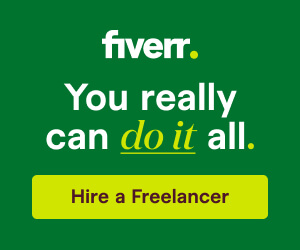The freelance economy presents a paradox—while platforms report millions of registered freelancers, fewer than 20% sustain full-time income beyond two years. Having mentored over 300 freelancers from launch to stability, I’ve identified the key pitfalls that derail promising careers and the strategies that help the successful minority thrive. The difference between flourishing and floundering rarely comes down to raw skill alone, but rather to overlooked business fundamentals and psychological traps.
The Pricing Trap
Undervaluing services remains the most common early career mistake. New freelancers often set rates based on personal financial needs rather than market value, creating unsustainable situations. A graphic designer might calculate needing 20/hourtopaybills,notrealizingcomparableprofessionalscharge20/hourtopaybills,notrealizingcomparableprofessionalscharge80-120. This miscalculation forces them to work exponentially more hours just to survive, leading to burnout.
The solution lies in value-based pricing tied to concrete client outcomes. When I shifted from charging hourly for writing to flat fees per project based on the revenue my content generated for clients, my income tripled while working fewer hours. A website redesign that might take 20 hours at 25/hour(25/hour(500) could legitimately be priced at $2,500 when positioned as an investment that improves conversion rates. This requires understanding and articulating how your work impacts the client’s bottom line.
The Hustle Fallacy
Many freelancers believe constant hustle is the only path to success, mistaking activity for achievement. They chase every potential client, accept unrealistic deadlines, and sacrifice personal boundaries—only to find themselves exhausted with mediocre results. The data shows the opposite approach works better: the most successful freelancers carefully qualify clients and protect creative capacity.
Implementing selective criteria transforms your business trajectory. I now require potential clients to complete a brief questionnaire before discussing projects. This simple filter eliminates 70% of mismatched opportunities while identifying clients truly worth pursuing. The remaining 30% receive my full attention and higher-quality work, leading to better outcomes, referrals, and sustainable workloads. Your ideal client profile should consider budget, communication style, project type, and values alignment—not just ability to pay.
The Isolation Effect
Freelancing’s solitary nature often leads to stagnation. Without colleagues to challenge ideas or share knowledge, many professionals plateau skill-wise while the industry evolves around them. I nearly quit in my third year when my once-cutting-edge web design skills became outdated, forcing me to accept lower-paying projects just to stay afloat.
Proactive learning systems prevent this decline. I now allocate 10% of my income and 5 hours weekly to professional development—taking courses, attending masterminds, and experimenting with new techniques. Building a “skills roadmap” that anticipates industry shifts allows you to evolve ahead of demand rather than scrambling to catch up. A copywriter friend transitioned from general blogging to high-paying AI prompt engineering work by recognizing the shift early and positioning accordingly.
The Cash Flow Crisis
Irregular income patterns destroy more freelance businesses than lack of work. The feast-or-famine cycle leads to desperate decisions—accepting low-quality projects, maxing out credit cards, or abandoning the field entirely. Traditional financial advice fails freelancers who can’t rely on biweekly paychecks.
Implementing a “personal CFO” system creates stability. I maintain three separate bank accounts: one for incoming payments (50% of deposits), one for taxes and business expenses (30%), and one for personal salary (20%). This enforced allocation prevents spending money that isn’t truly available. Building a 3-6 month expense cushion—even if it means temporary side gigs—provides the runway needed to make strategic decisions rather than panic-driven ones.
The Client Dependence Danger
Relying on one or two major clients puts freelancers in precarious positions. When a key account changes direction or cuts budgets, the financial impact can be catastrophic. Early in my career, losing a single client who represented 80% of my income nearly forced me back into traditional employment.
Diversification strategies build resilience. The healthiest freelance businesses follow the 30-30-30-10 rule: no more than 30% of income from any single client, 30% from recurring work, 30% from new projects, and 10% from passive income streams. This mix provides stability while allowing growth. Developing digital products, affiliate income, or teaching opportunities creates cushions between you and client volatility.
The Visibility Gap
Many talented freelancers struggle because potential clients simply don’t know they exist. Relying solely on platforms like Upwork or Fiverr creates vulnerability to algorithm changes and fee increases. The most sustainable careers combine platform work with independent visibility.
Content marketing establishes authority and inbound leads. I dedicate four hours weekly to creating valuable, public work—blog posts explaining industry concepts, YouTube tutorials, or GitHub code samples. This “show don’t tell” approach demonstrates expertise more convincingly than any sales pitch. A photographer friend gained her highest-paying clients by publishing behind-the-scenes breakdowns of her editing process—transparency became her competitive edge.
The Boundary Breakdown
Failure to separate work and personal life leads to resentment and burnout. The “flexibility” of freelancing often becomes working constantly without true time off. Initially proud of answering client emails at midnight, I eventually realized this 24/7 availability was destroying my creativity and relationships.
Implementing strict operational systems restores balance. I now maintain set office hours (9am-5pm, Monday-Thursday) communicated clearly to all clients. An auto-responder handles after-hours inquiries politely but firmly. Vacation time gets blocked months in advance—treating personal time as seriously as client commitments. These boundaries paradoxically increase client respect while protecting your capacity to deliver quality work.
The Mindset Minefield
Internal narratives often sabotage freelance success more than external factors. Imposter syndrome, fear of rejection, and perfectionism prevent many from charging appropriately, marketing effectively, or delivering work confidently. I wasted months undercharging because I didn’t feel “expert enough” to command higher rates despite demonstrable results.
Cognitive reframing techniques build professional confidence. Keeping a “win file” of positive feedback and successful projects provides concrete evidence against self-doubt. Setting “learning goals” rather than perfection standards (“improve client onboarding” vs. “never make mistakes”) creates healthier motivation. Many freelancers benefit from professional coaching or mastermind groups that normalize challenges and provide accountability.
The Scaling Paradox
Attempting to scale too quickly—or not at all—dooms many freelance ventures. Some take on employees and overhead before establishing stable systems, while others remain stuck in time-for-money trading that limits earning potential. The sweet spot involves strategic leverage without premature complexity.
The “team of one” model offers a middle path. Rather than hiring full-time staff, I cultivate trusted specialists to subcontract overflow work—a proofreader, graphic designer, and virtual assistant who understand my standards. This flexible capacity allows handling larger projects without fixed payroll burdens. Automation tools handle repetitive tasks like invoicing and scheduling, freeing time for high-value work only I can do.
The Succession Blindspot
Few freelancers consider what happens to their business during illness or life changes. Unlike traditional jobs with sick days and coverage systems, independent professionals often have no safety nets. A serious health crisis could destroy years of built client relationships overnight.
Contingency planning provides essential protection. I’ve documented all client processes in a secure operations manual and arranged with a trusted colleague for emergency coverage. Disability insurance replaces income during extended recovery periods. These measures cost little to implement but prevent catastrophe—the business equivalent of wearing a seatbelt.
Freelancing’s high failure rate stems not from lack of opportunity, but from unaddressed structural and psychological challenges. The professionals who thrive long-term treat their freelance work as a serious business from day one—implementing financial systems, marketing strategies, and professional development plans with the same discipline as any successful company. By anticipating these common pitfalls and building guardrails against them, you position yourself among the minority who turn freelance work into sustainable, fulfilling careers. The freedom of freelancing comes not from working less, but from working intentionally on what matters most—both professionally and personally.








